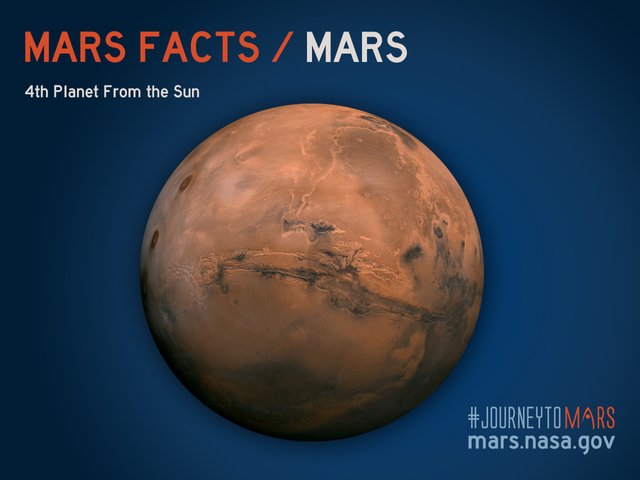Some facts about Mars

Mars is a cold desert world, and is the fourth planet from the sun. It is half the diameter of Earth and has the same amount of dry land. Like Earth, Mars has seasons, polar ice caps, volcanoes, canyons and weather, but its atmosphere is too thin for liquid water to exist for long on the surface. There are signs of ancient floods on the Red Planet, but evidence for water now exists mainly in icy soil and thin clouds.

Earth has one, Mars has two…moons of course! Phobos (fear) and Deimos (panic) are the Red Planet’s two small moons. They are named after the horses that pulled the chariot of the Greek war god Ares, the counterpart to the Roman war god Mars.

The diameter of Mars is 4220 miles (6792 km). That means that the Red Planet is twice as big as the moon, but the Earth is twice as big as Mars.

Since Mars has less gravity than Earth, you would weigh 62% less than you do here on our home planet. Weigh yourself here on the Planets App. What’s the heaviest thing you’ve ever lifted? On Mars, you could have lifted more than twice that! Every 10 pounds on Earth only equals 4 pounds on the Red Planet.

Mass is the measurement of the amount of matter something contains. Mars is about 1/10th of the mass of Earth.

Mars and Earth are at their closest point to each other about every two years, with a distance of about 33 million miles between them at that time. The farthest that the Earth and Mars can be apart is: 249 million miles. This is due to the fact that both Mars and Earth have elliptical orbits and Mars’ orbit is tilted in comparison with the Earth’s. They also orbit the sun at different rates.

The temperature on Mars can be as high as 70 degrees Fahrenheit (20 degrees Celsius) or as low as about –225 degrees Fahrenheit (-153 degrees Celsius). How hot or cold the surface varies between day and night and among seasons. Mars is colder than Earth because it is farther from the sun.

You know that onions have layers, but did you know that Mars has layers too? Like Earth, Mars has a crust, a mantle and a core. The same stuff even makes up the planet layers: iron and silicate.

Ever wonder why it’s so hard launching things to space? It’s because the Earth has a log of gravity! Gravity makes things have weight, and the greater the gravity, the more it weights. On Mars, things weigh less because the gravity isn’t as strong.

Take a deep breath. What do you think you just breathed in? Mostly Nitrogen, about a fifth of that breath was Oxygen and the rest was a mix of other gases. To get the same amount of oxygen from one Earth breath, you’d have to take around 14,500 breaths on Mars! With the atmosphere being 100 times less dense, and being mostly carbon dioxide, there’s not a whole lot of oxygen to breathe in.

Mars has about 15% of Earth’s volume. To fill Earth’s volume, it would take over 6 Mars’ volumes.